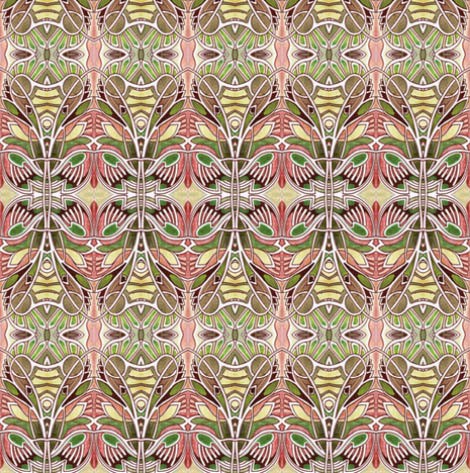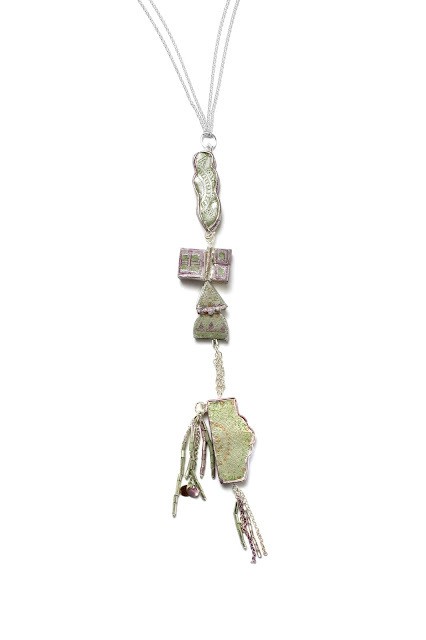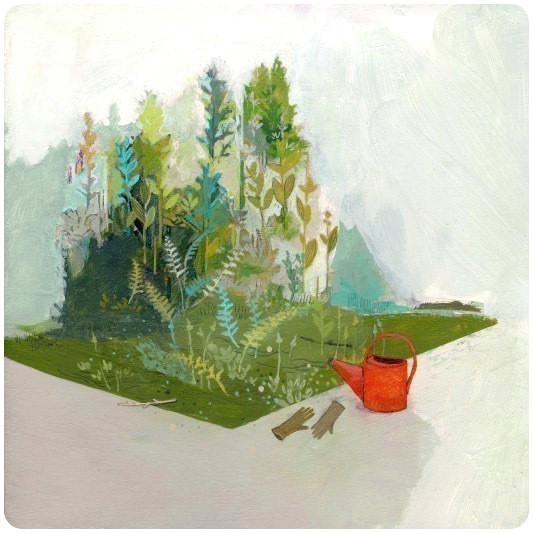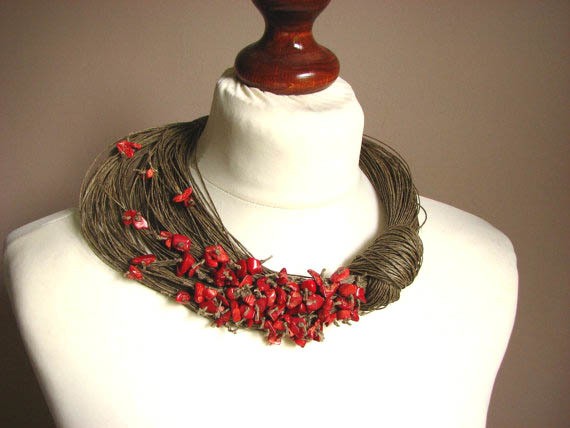Welcome to my next post in the Design How-to series. This one’s on the principle of Balance.
Balance considers the visual weight of both sides (or top and bottom) of a piece of work, i.e. how well the dominant features ‘fill the space’.
Visual balance in a composition can be achieved in several ways, and the very simplest method is to use symmetry. This Art Deco-influenced fabric design uses a section of drawing which has been mirrored both vertically and horizontally to excellent effect. The large ovals float over the top, lining up to create a pleasing rhythm.
The work doesn’t have to be perfectly symmetrical to achieve balance; sometimes it can be more interesting to have things a little uneven. The bottom elements of Katherine Bowman’s neckpiece create a playful and intriguing point of interest. It still works because the bulk of the large element bumps out to the right, pointing away from the fine, long elements at the left.
It’s all about how to lead your eyes through and around a piece.
Visual balance can be created with a large mass or shape on one side, and a small but compelling point of interest in the space on the other side of the composition. In this, the massed growth of greenery is balanced by the red watering can. The more space there is surrounding the smaller object, the more compelling it can become, and this effect can often result in a lovely kind of tension, or sense of expectation between the large and small things.
Sometimes, balance can be achieved with space. The knot in this gorgeous linen neckpiece creates a dense border, over which there is nothing. I tend to view this piece from left to right (as most Westerners do, because it’s the way we’ve been taught to read), and so my eyes travel through the increasingly dense red, until they hit the knot and break free.
Tell me, is that what yours do?
I’d love to get some more feedback on how useful this series has been for you! (You can find the rest of the series on the Elements & Principles of Design here.)
As always, if you’ve got a project that you’re proud of, that you can demonstrate any of these Elements and Principles with, I would LOVE to hear about it. If you’ve got a pic of it up online somewhere, please add a link in the comments below, so you can show it off!! ![]()
Cheers, Julie xx




